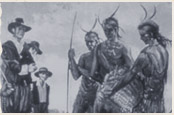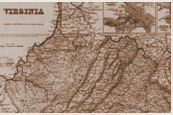Virginia Statute for Religious Freedom
Library of Virginia
Bill of Rights
Yale University Law School: The Avalon Project
Description: The Virginia Statute for Religious Freedom was written by Thomas Jefferson in 1779. James Madison led the campaign for its adoption by the Virginia Legislature in 1786. The Statute was written to end tax supported churches and interference from the government into one’s personal religion. This was the first document to call for the separation of church and state. Other states followed suit with similar legislation. This document became the basis for the freedom of religion clause of the first amendment of the Bill of Rights.
Teaching Tips:
"Do Now" Suggestion
- Using this document and the Virginia Declaration of Rights have students create a chronological flow chart of ideas that led to the Bill of Rights.
- Prior to the Revolution, the Anglican Church in America funded by taxes. Discuss why this was possible and how this changed after the Revolution. Ask students to identify which document ensures that churches can not be supported by tax dollars. Then read and discuss the origin of the separation of church and state, the Virginia Statute for Religious Freedom.



